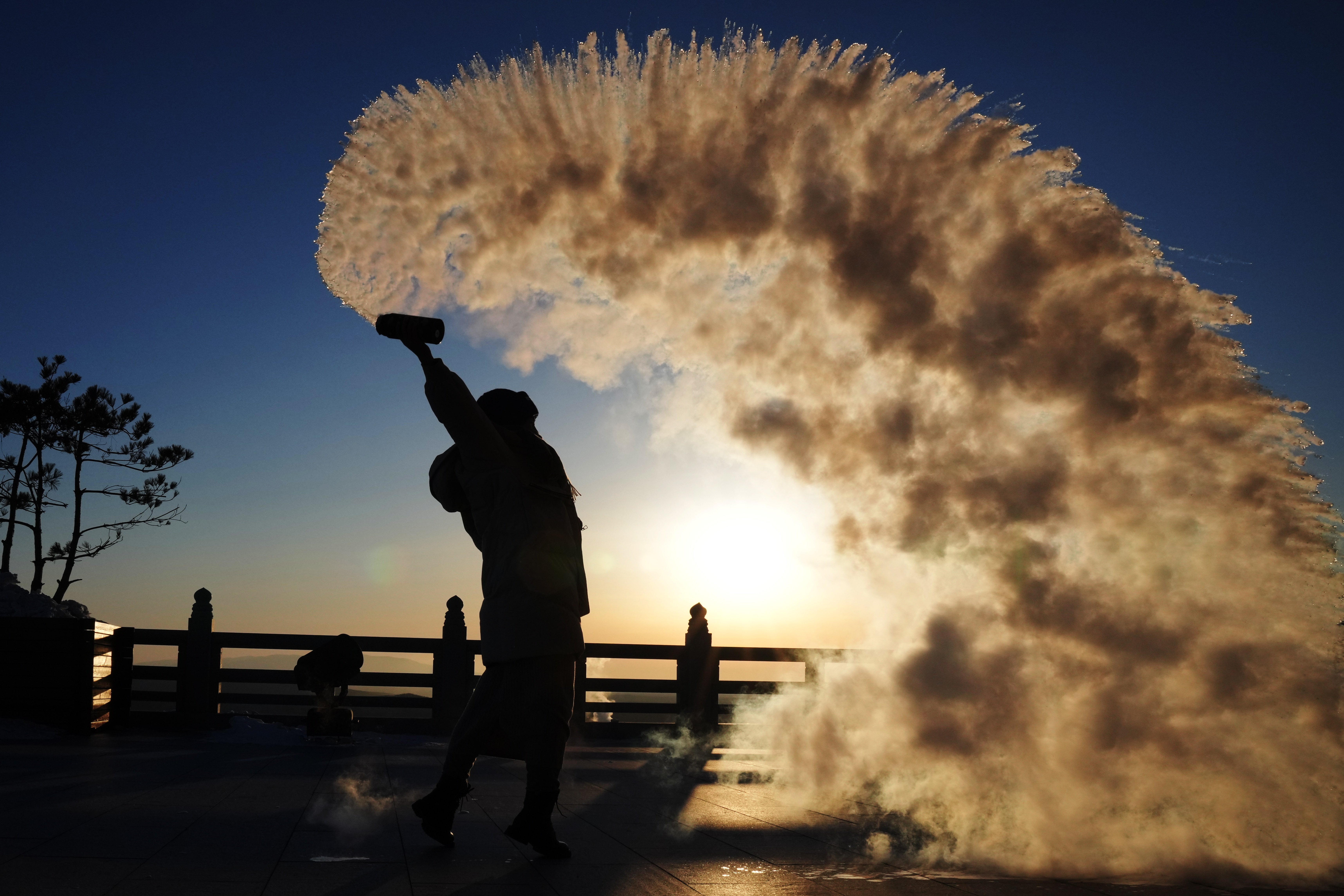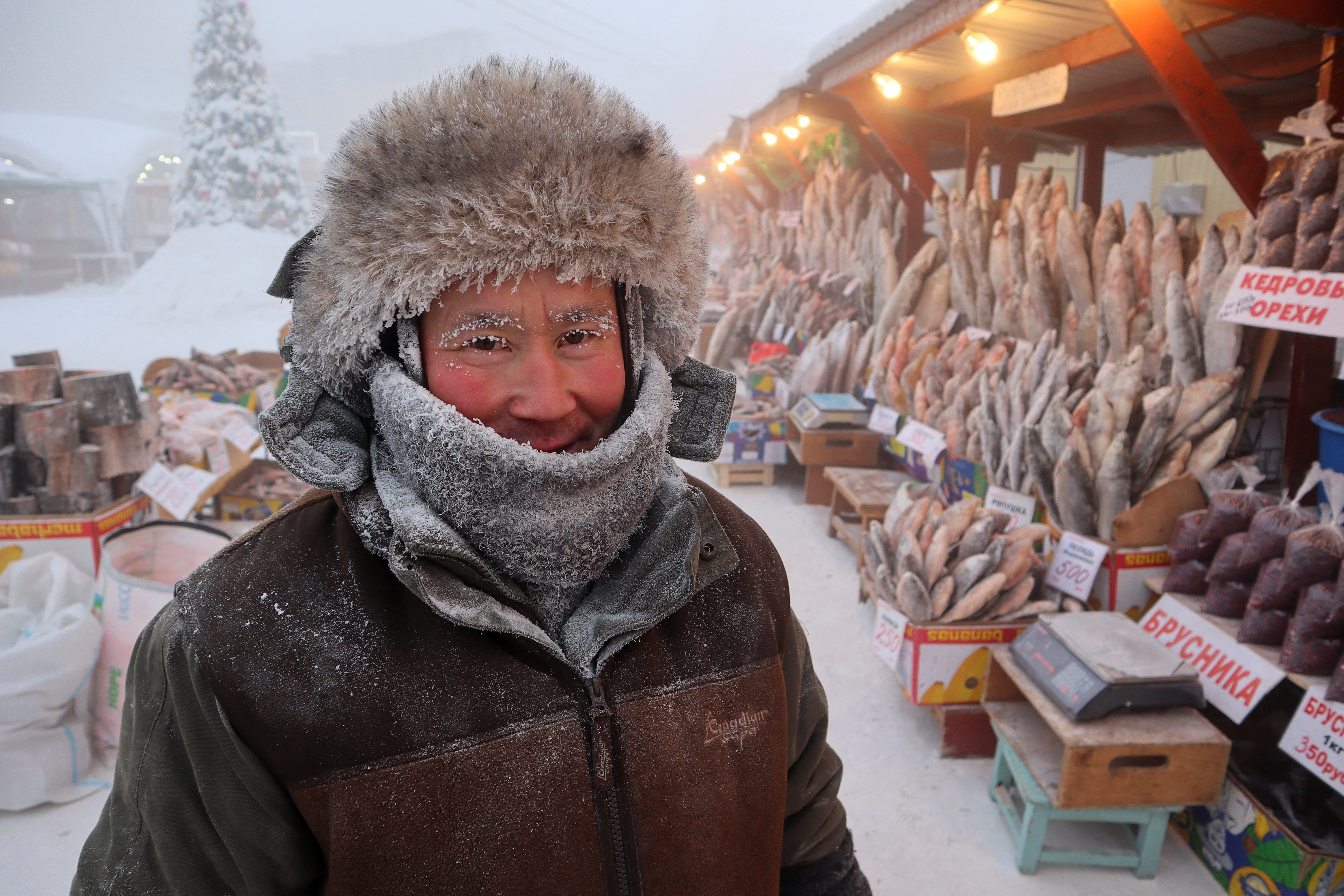As Asian countries hit by extreme cold snap, here’s what life is like at -53C
Residents describe life in a city where frostbite sets in within minutes, eggs freeze in seconds and the walls are all covered in vertical snow

An intense cold spell is gripping east Asia, with temperatures plunging and hazardous conditions reported across China, the Koreas and Japan.
On Monday one of China’s northern-most cities broke its lowest ever recorded temperature, with the mercury hitting -53C at 7am on the first day of the Lunar New Year in Mohe, Heilongjiang province.
Japan and the Korean peninsula have also issued warnings over freezing temperatures and gales that have killed at least one person, while at least 57 people have been reported dead in Afghanistan as the wintry conditions stretch across into central Asia.
Mohe, widely known as “China’s North Pole” is nestled near Russia’s Siberia region, where temperatures can drop as low as -68C. It is one of the few places in China to have a subarctic climate.
Winters in Mohe are generally eight months long and begin in early October, often lasting until May. Average temperatures during this period as a whole have been known to dip below freezing, experts say. But a temperature of -50C is rare.
Residents in the wider area are describing spine-chilling details of the harsh winter conditions as 12 weather stations in Heilongjiang alone report temperatures close to or below their own low-temperature records this week.
One resident told Kanji Video that within 10 seconds of going outside, his hands had already started to feel numb.
“It becomes hazy about 100m in front of you, you can’t see anyone,” he said.
A viral video from China’s state broadcaster CCTV shows that when a reporter tried breaking an egg on an outdoor surface in Mohe, the yolk froze within seconds.
Other videos show a thick layer of ice on vertical surfaces like walls and doors, as water freezes instantly on any surface.
Residents say there are hardly any people seen venturing outside their homes, as visibility has plunged down to dangerous levels.
Xu Liling, head of the Mohe meteorological station, has advised people to stay indoors as extremely low visibility can cause traffic accidents.
Heilongjiang province is known in China for its extremely cold winters, due to its unique geographical location where cold winds from Siberia meet the warm, moist air from the Pacific Ocean, causing harsh winter conditions.
Yet even for those used to living in subzero temperatures, further drops to the kind of record lows seen this year add more layers of difficulties to existing challenges.
Experts say living under minus -50C can be extremely dangerous, and potentially life-threatening, if proper precautions aren’t taken. Most areas of the globe where temperatures fall below these levels aren’t suitable for permanent human settlement.
At -50C, it can be difficult to keep warm even with multiple layers of clothing, and exposure to the cold for just a few minutes can lead to hypothermia or frostbite.
The normal human body core temperature is 37C. Hypothermia is where your body temperature gets dangerously low, below 35C. In this condition the body loses heat faster than it can produce it. Spiralling below the narrow range of core body temperature at which humans are able to function.
While temperatures between 0C and -20C are not cause for alarm, anything at -20C or lower “can make you really start to worry about things like frostbite if you’re outdoors,” says Australian Antarctic Division deputy chief medical officer, Roland Watzl.

At -20C it takes around half an hour to develop frostbite and aspects of daily life, such as going for a walk, become increasingly difficult. However, when it comes to temperatures below as low as -50C, the difference becomes “painful” and frostbite occurs in just 2-5 minutes, Dr Watzl explains to ABC News.
“You go from bitterly cold to painfully cold, almost immediately,” he said. “It’s painful to even be outside. Anything that is exposed to the wind becomes painful and frostbite develops in 2 to 5 minutes. Just breathing can be painful because you’re breathing really cold air straight into your lungs.”
In normal conditions, frostbites can leave blisters after the skin is rewarmed. But more serious frostbite affects the deeper layers of muscle and bone. This can result in permanent tissue damage and may require amputation of fingers, toes, feet, hands and even larger parts of the arm or leg.
Experts say temperatures of -50C can cause hypothermia in as little as five minutes if any part of the skin, especially the scalp, hands, fingers, and face, are exposed.
The US National Weather Service says a wind chill of -45C could freeze skin in a matter of minutes.
How long it takes for someone to freeze to death depends on conditions and the type of exposure, but death can occur in under an hour if conditions are dangerous enough.
Residents living in such harsh conditions say it is impossible to fight the cold, the only option is to take sensible precautions or “suffer”.
In Yakutsk, known as the world’s coldest city in neighbouring Siberia, temperatures plunged to -62.7C last week, the coldest recorded in more than two decades. Residents in the mining city often see the thermometer drop below -40C.
“You can’t fight it. You either adjust and dress accordingly or you suffer,” Anastasia Gruzdeva, a resident of the city told Reuters news agency, standing outside in two scarves, two pairs of gloves and multiple hats and hoods.
“You don’t really feel the cold in the city. Or maybe it’s just the brain prepares you for it, and tells you everything is normal,” she added in the city shrouded by icy mist.

Living in an environment when the temperature is below -50 can also make it impossible to carry out some regular activities like driving, cooking or just going for a walk outside.
The cold hinders the ability to create a fire and interfere with machinery and equipment. Batteries may deplete more quickly as a result, lighting matches or lighters may be challenging, and fuel may gel up and be challenging to use.
Another resident, Nurgusun Starostina, who sells frozen fish at a market without the need for a fridge or freezer, said there were no special secrets to deal with the cold.
“Just dress warmly,” she said. “In layers, like a cabbage!”






Join our commenting forum
Join thought-provoking conversations, follow other Independent readers and see their replies
Comments